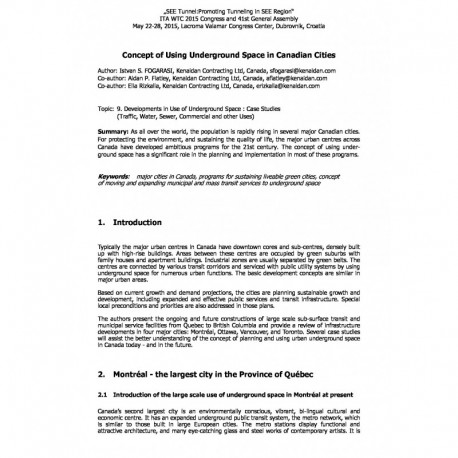Cart
0
0
No document
0,00 €
Total
Document successfully added to your shopping cart
Quantity
Total
There are 0 items in your cart.
There is 1 item in your cart.
Total documents
Total shipping
To be determined
Total
Search & filter
Search for a publication
Search & filter
Viewed documents

Concept of Using Underground Space in Canadian Cities
wtc2015_full_fogarasi
I. S. Fogarasi / A. P. Flatley / E. Rizkalla
Typically the major urban centres in Canada have downtown cores and sub-centres, densely built up with high-rise buildings. Areas between these centres are occupied by green suburbs with family houses and apartment buildings. Industrial zones are usually separated by green belts. The centres are connected by various transit corridors and serviced with public utility systems by using underground space for numerous urban functions. The basic development concepts are similar in major urban areas. Based on current growth and demand projections, the cities are planning sustainable growth and development, including expanded and effective public services and transit infrastructure. Special local preconditions and priorities are also addressed in those plans. The authors present the ongoing and future constructions of large scale sub-surface transit and municipal service facilities from Quebec to British Columbia and provide a review of infrastructure developments in four major cities: Montréal, Ottawa, Vancouver, and Toronto. Several case studies will assist the better understanding of the concept of planning and using urban underground space in Canada today - and in the future.


